Phool Bangla at Sri Kanak Bhawan, Ayodhya Photo Journal
What is a Phool Bangla?
Vrindavan has a tradition of Phool Bangalas to keep the summer heat away from Sri Radha Krishna. The temple is converted into a palace made of flowers. Sri Banke Bihari temple has Phool Bangalas everyday from the festival of Akshay Teej to Saavan Hariyali Amavasya. Bihariji’s clothes are also made of flowers, when a Phool Bangla is made.
Phool Bangla at Sri Kanak Bhawan, Ayodhya
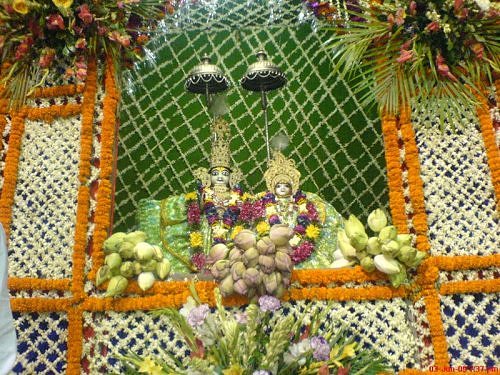
Kanak Bhawanin Ayodhya is the palace of Sri Sita and Rama. It was a welcome gift to Sita from her mother-in-law Kaikeyi. Kanak Bhawan still exists in Ayodhya. It has a tradition of Sringar Bhakti. The divine couple is handled with love along with respect. Varied expression of this love for the divine is an intrinsic part of sadhna here. Raga, Sringar and Bhog seva holds good here.
Rama, an incarnation of Lord Vishnu came with a mission to establish law and order, is generally treated with high regard, while Krishna came to love and be loved and is popular as an lovable, approachable personal friend. At Kanak Bhawan, the worship of Sita Ram is akin to that of Sri Radha Krishna in Vrindavan. Madhurabhakti is evident in festive celebrations, songs and the bhaav of pleasing the divine. Phool Banglas are an offering of love to please the divine couple, and shield them from the North Indian summer heat.
Arti at Kanak Bhawan
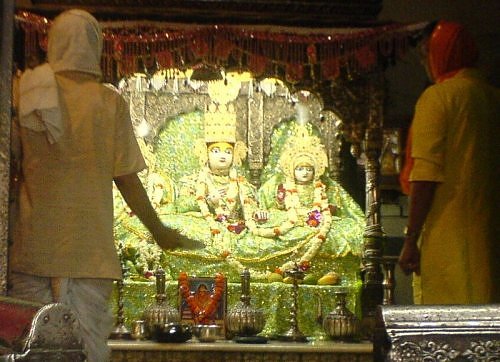
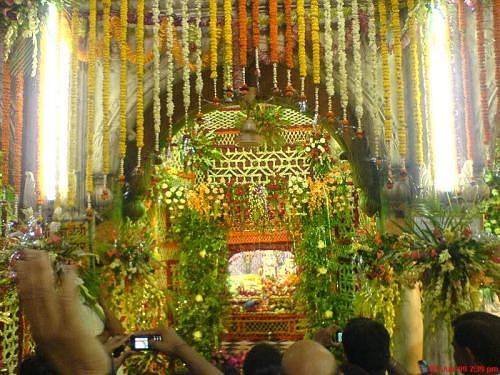
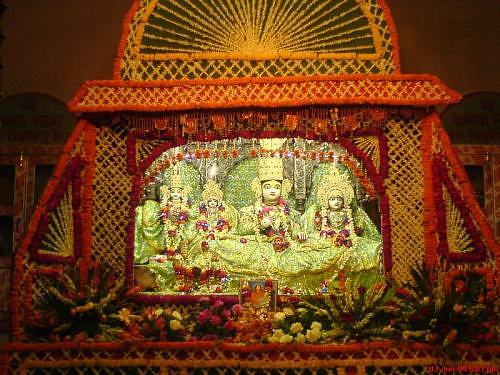
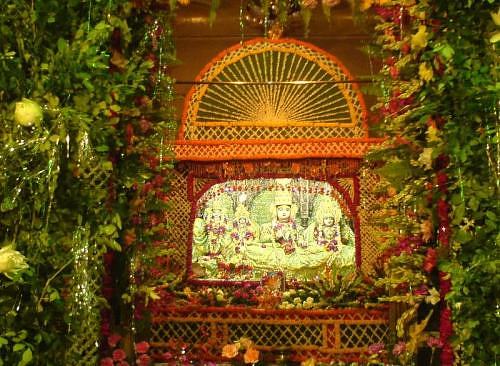
Sri Kanak Bihari darshan
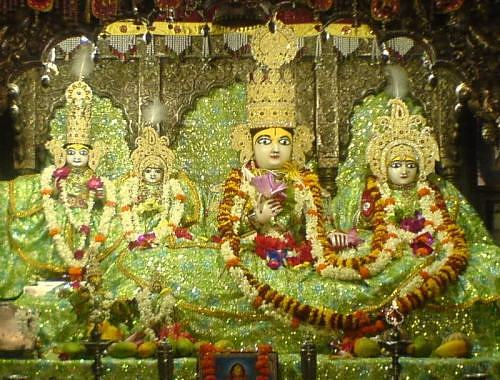
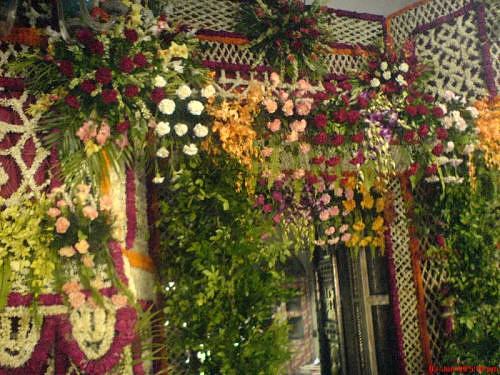
Phool Banglas are an offering of love to please the divine couple, and shield them from the North Indian summer heat.
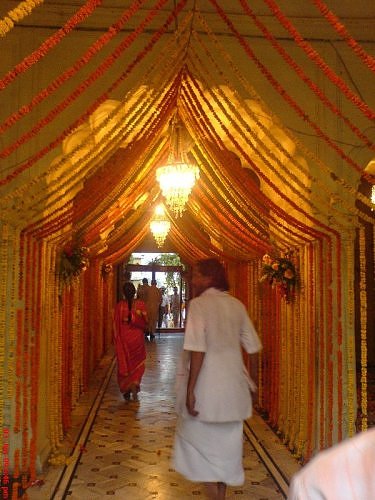
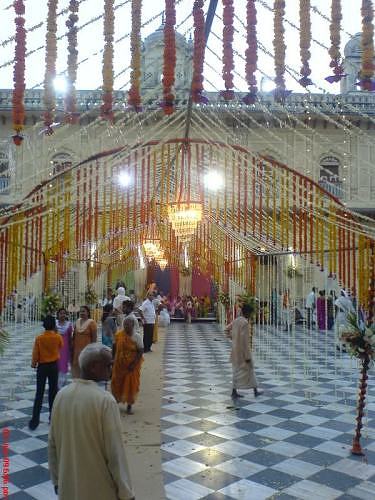
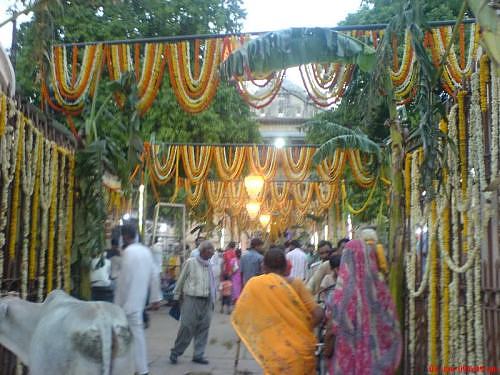
Map: Sri Kanak Bhawan, Ayodhya
View Larger Map

